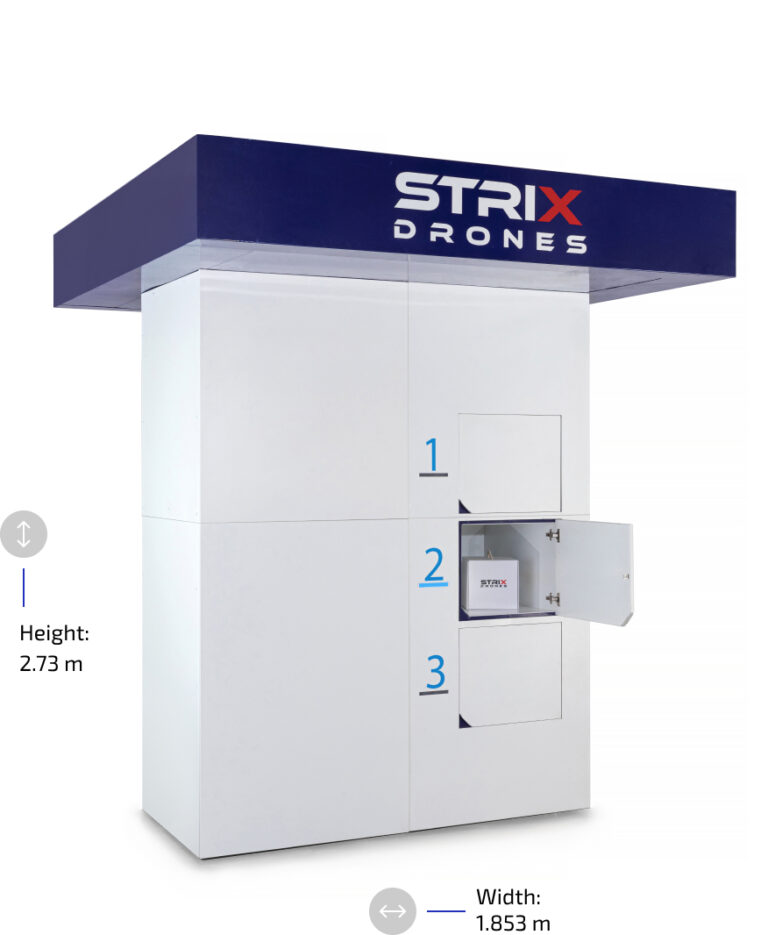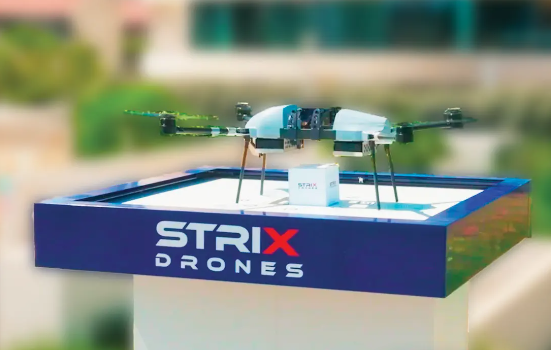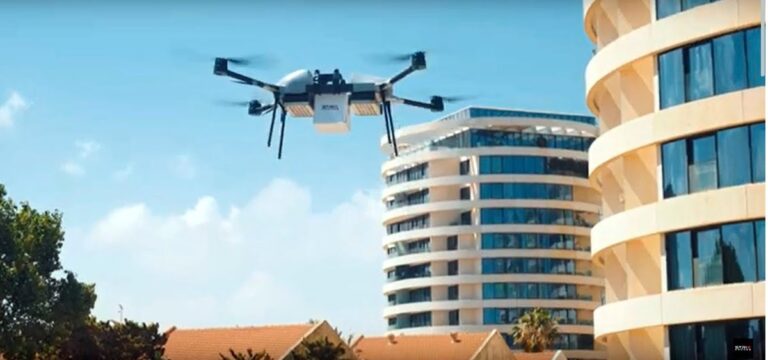Background
Drones have become an integral part of modern society, revolutionizing various sectors with their versatile applications and capabilities. When not used for filming and recreation, drones are used to inspect infrastructure like bridges, towers, railways, and power lines as drones can take high-resolution images and collect data such as thermal imaging, physical integrity, and other features. Drone docking stations, also commonly known as drone-in-a-box (DIB) are therefore a critical component for many applications.

Why do we need a dIB?
Drones that are used for long flight times and/or long-distance missions are typically heavier and carry delicate measuring equipment. The assembly and calibration of such drones takes time and therefore it is typical for such drones to be stored in dedicated boxes that offer them physical protection. Advanced drone docking stations should also have the means to charge the drones using either physical contact or a robotic battery exchange mechanism in addition, the drone-box should include measures for isolating the drone from heat, wind, and rain.
Furthermore, if the drone is meant for military application, the box casing may also need to be camouflaged and resistant to electronic warfare and include additional measures such as secure data connections.
The questions to ask
When coming to select a drone-in-a-box there are several important questions to ask:
- Will the drone-in-a-box need be serving industrial & military applications?
- Will the drone-in-a-box service a drone on autonomous missions?
- Wil there be a need to upgrade the drone and its sensors in the next few years?
If the answer to any of these question is positive, it is likely that a professional, dedicated Drone-In-A-Box should be considered as they are designed to service multiple types of drones, this question is YES, then a simple drone-box solution will suffice and looking for a solution by one of the leading recreational drone manufacturers such as DJI or Parrot who sell optional drone-boxes should answer this need. If the need is to store larger drone types and potentially more than one type of drone, then the following questions are applicable…
Consider the next set of questions:
- Does the drone-box need to withstand external weather such as rain, wind, or a wide range of outside temperature swings?
- Does the drone-box need to service beyond-line-of-sight (BVLOS) missions?
- Does the drone-box need to land both quad-copter and electric vertical takeoff & landing (eVTOL) drone types?
Answering the questions can help clarify what specific features and functionalities to look for both for the drone selection and the drone-box selection. As seen in the table below, the full solution depends on the selection of the optimal combination of drone and drone-box for each use case.
Use Cases and System Features
Use Case | Drone & Payload Features | Docking Station Features |
Security & Surveillance | – Thermal and night vision cameras | – Integration with security systems – Automated perimeter patrols – Long endurance flights or tethered flights |
Emergency Response | – Payload delivery capability (e.g. AED, supplies) | – Rapid deployment – Automated missions – Integration with emergency services |
Industrial Inspection | – High-resolution cameras | – Advanced data processing and reporting |
Environmental Monitoring | – Multispectral and hyperspectral cameras | – Support for eVTOL drones – All weather protection |
Telecommunications | – Tethered or long-endurance flight | – Rapid deployment for emergency coverage – Integration with cellular networks |
Military & Defense | – Advanced sensors and payloads | – Ruggedized and secure design – Integration with military systems |
In Conclusion
Drones are here to stay and will be increasingly used in civil, industrial and defense applications given the regulation, technology, and cost consideration. Drone-boxes for cutting edge use cases such as defense, long-distance surveillance, emergency response will need to support many features & functionalities such as the ability to charge any kind of drones, support both quad and eVTOL drones, protect the drones from weather and be open for integration with many types of command & control systems.
We covered so far in this document four questions related to use cases, the fifth and last question I pose is the economic one:
- Does the drone-box you select have a viable roadmap and economic backing to support your operations for many years ahead?
What is your ROI for adding this technology into your operation?
Consider that new batteries and avionics for drones are re-invented daily and the drone-box selected will need to be easily adoptable to support new drones as they come out. Regulations for air-traffic control are being written and revised and the drone-box will also need to maintain an open architecture to interface with such systems now and in the future.
Authored by Ian Sorek , head of global business development for Strix Drones
Follow me on LinkedIn:
Follow Strix Drones
https://www.linkedin.com/company/strixdrones
References for this article
https://decentcybersecurity.eu/power-line-inspections-ai-drones-and-u-space-synergy/
https://www.ofil-europe.com/power-line-inspection/
https://www.flytbase.com/blog/eu-drone-regulations-for-bvlos-operations
https://www.dronewatch.eu/easa-publishes-proposed-standards-for-certification-of-light-drones/
https://www.perplexity.ai/ – For gathering and organizing information and references






